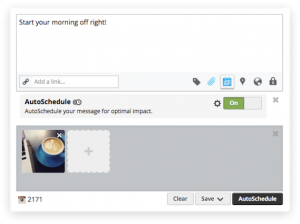Data Limitations Force Industry To Create New Ad Optimization Methods
Marketers are facing blind spots in the transition to first-party data, although analysts are doing their best to improve customer protections and projections. These methods have one fatal flaw, and can create serious implications for businesses and brands.
They are often based on attribution and optimization for what happens on a brand’s website, not the activities that occur on competitors’ sites — search or ecommerce sites, according to research released Wednesday.
“In some ways the findings are intuitive and relate to the old adage, measure what matters,” said Anne Hunter, vice president of product marketing for DISQO. “What’s new here is that we can now quantify what matters, and discovered it isn’t what marketers are actually optimizing toward.”
It sounds pretty crazy, but it turns out marketers overemphasize the value of their own website as a lower-funnel indicator, she said.
A recent report by the ANA said 72% of brands use website visitation as a success metric. When buyers are actually in the decision-making process, they do a lot of research at the point of sale, and a little too late, so optimizing media to deliver truly interested buyers won’t work with website metrics alone.
“Without a line of sight into advertising’s impact on ecommerce activity, ad optimization may be futile or even harmful,” she said. “Brands need to incorporate ecommerce search into their ad effectiveness models to drive proper attribution.”
The findings are highlighted in a study released today by DISQO, an audience insights platform.
The Foundations of Ad Effectiveness series examines consumer journeys to highlight what really works as limitation are put on third-party identity-based measurement. The company partnered with advertising researcher Joel Rubinson, president and founder of Rubinson Partners, to analyze DISQO’s zero-party audience data, and co-author the series.
The first report, “X-Ray Specs for Path to Purchase Attribution,” shows that brands with a restricted view of their consumers’ journey can drive customers away from destinations where they are most likely to buy.
Researchers analyzed high-ticket products such as laptops, and fast-moving consumer goods such as pet food to study online behaviors. The study took five months to complete.
Among the behaviors analyzed were search, site visitation, social activity and ecommerce behaviors. Although it examined very different product categories, the findings were strikingly similar:
– Views to product pages on ecommerce platforms were 2 to 4-times more effective than visits to product pages on a brand’s own website.
– Brand health tracking show is must evolve to include search within ecommerce environments to more accurately correlate to sales.
– Optimizing based on clicks and view-throughs to owned landing pages are inadequate at best, and misleading at worst.
It’s interesting that across both types of branded products studied, the same trend emerged. Any activity on an ecommerce website, even reviewing competitors, was considerably more predictive of conversions than other behaviors, including search engine behaviors, and visitation to the websites of the brands studied.
Inside Performance asked Hunter, “if there’s only one thing you can tell marketers about ad measurement and search, what would it be,’ and she said “don’t settle for metrics just because they are easy to access. New techniques using permissioned panels can show you more of the path to purchase and give you an advantage over your competition in owning share of wallet.”
(22)







